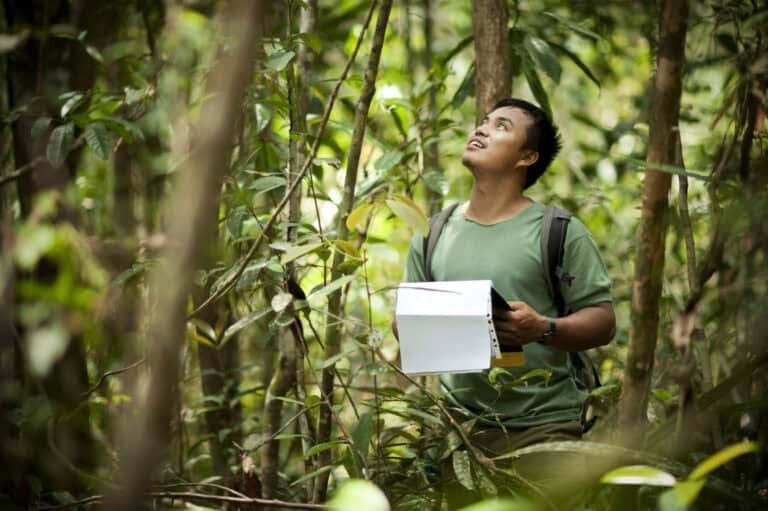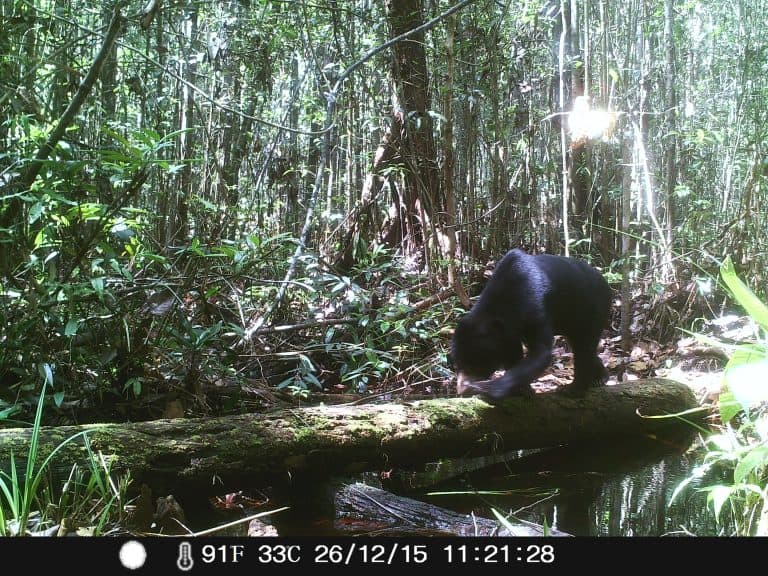by Arapa Efendi (Content Writer)
Below are two photos of a long-nosed monkey (Proboscis monkey) or locally known as Bekantan that visited our research camp at the Natural Laboratory of Sebangau Peat-Swamp Forest (NLPSF) very recently. Our special guest traveled across 55 miles from the Muara Bulan regency, the district of Katingan, to camp. The photo of this bekantan was automatically taken by the camera trap as one of 140 other independent photos of 21 species appear in October report.

Like orangutans, Bekantan is one of the Bornean flagships that faces serious threats leading to its population decline. It becomes the major icon of South Kalimantan (Banjarmasin) with a giant statue of Bekantan sitting on Martapura riverside. The making of this statue is known to spend around 2 billion rupiah. Moreover, Bekantan is also a popular icon of East Kalimantan with large groups of this proboscis monkey inhabit mangrove forests being unique attraction to tourists that enjoy their eco visit. However, not many people know that this proboscis monkey is also found in the Sebangau National Park. In Sebangau peat-swamp forest, bekantan which also owns the name “dutchman” by local people for its long nose co-exists with orangutan. Yet, many people know more orangutan than they do about bekantan.
The population density of this long-nosed monkey is found almost in all regions of Kalimantan including Sebangau peat-swamp forest which stretches over three districts of Katingan, Kotawaringin, and Palangka Raya, Central Kalimantan Province.
Not only that bekantan is known arboreal, living in trees, it also favors riverine forests which means that this monkey must have stayed very close to the water source as its natural habitat. Being close to the water source as the natural habitat, this monkey is known with its capability to swim across the rivers. Do you think Mr. Bekantan was able to find his way back home?






